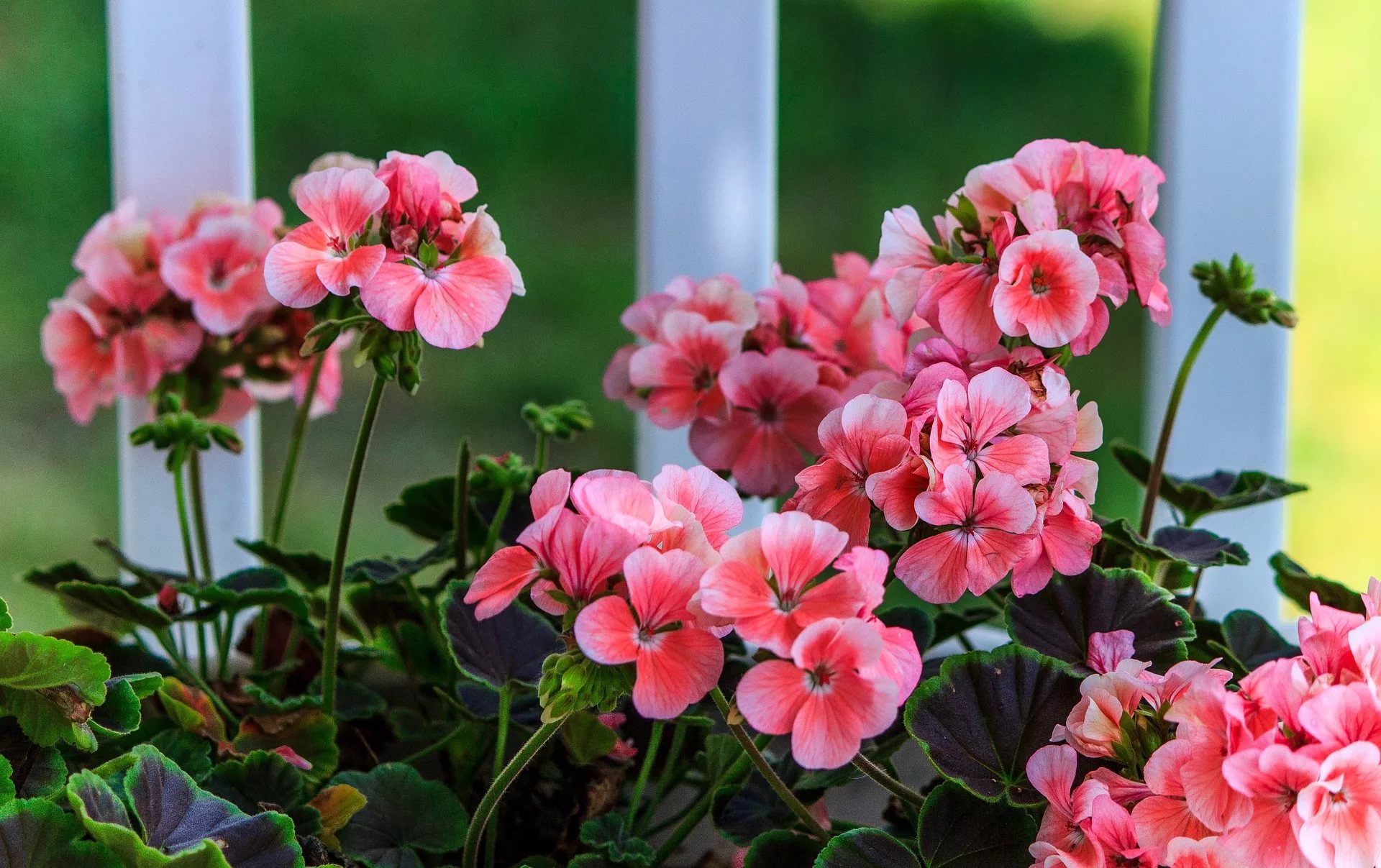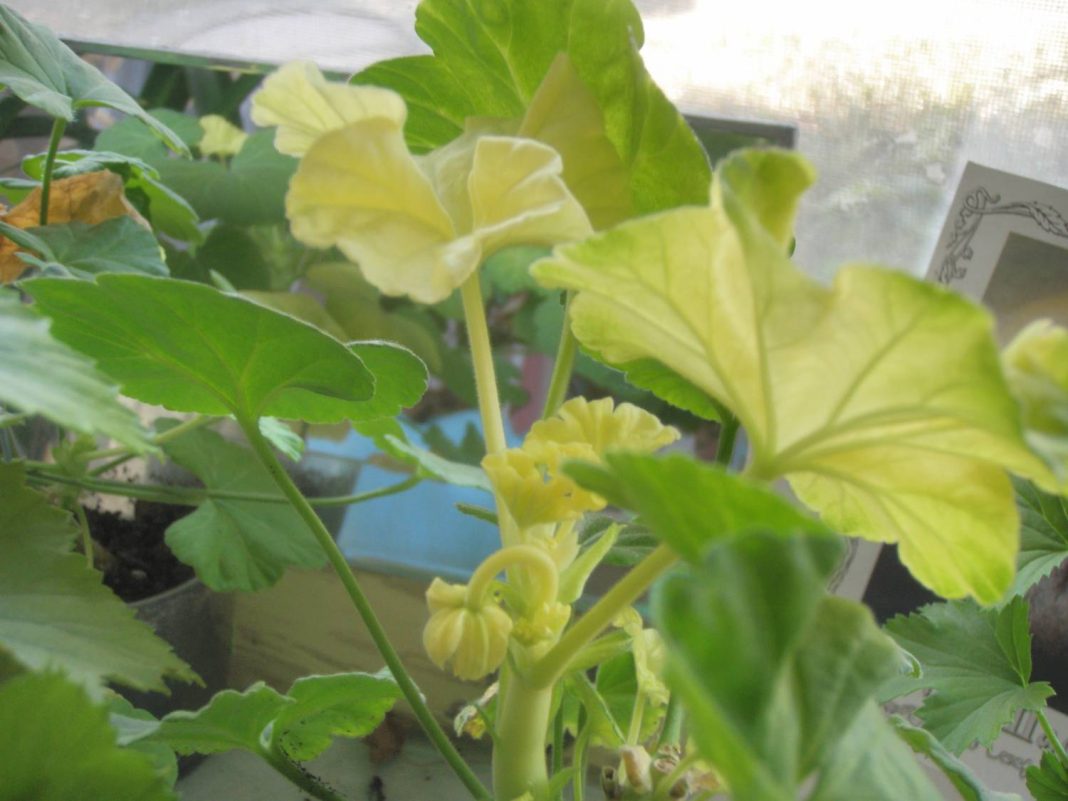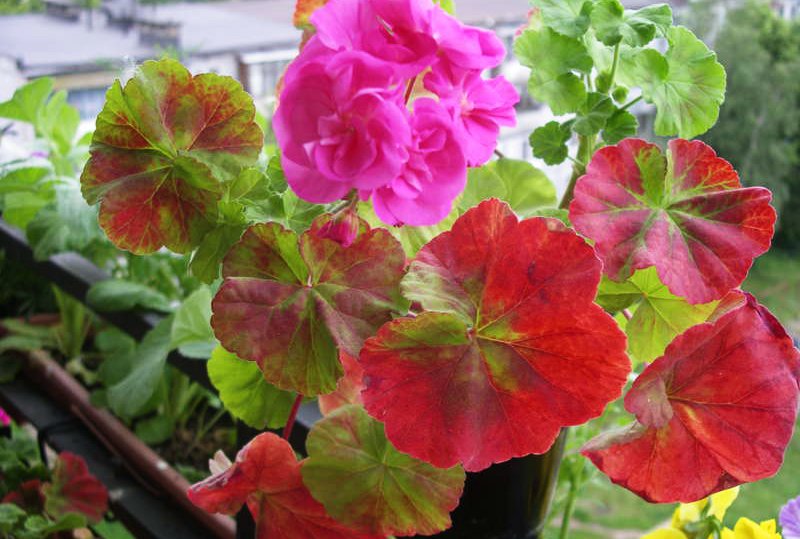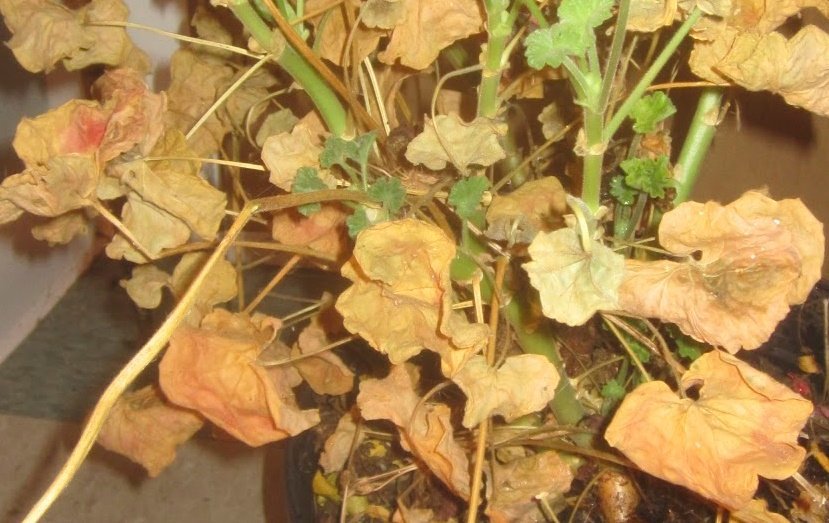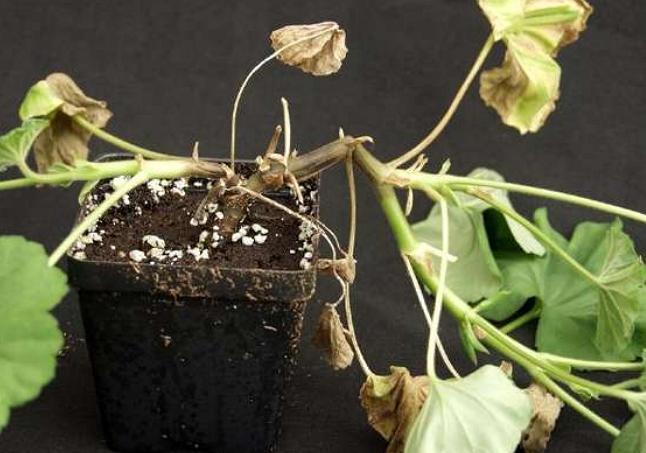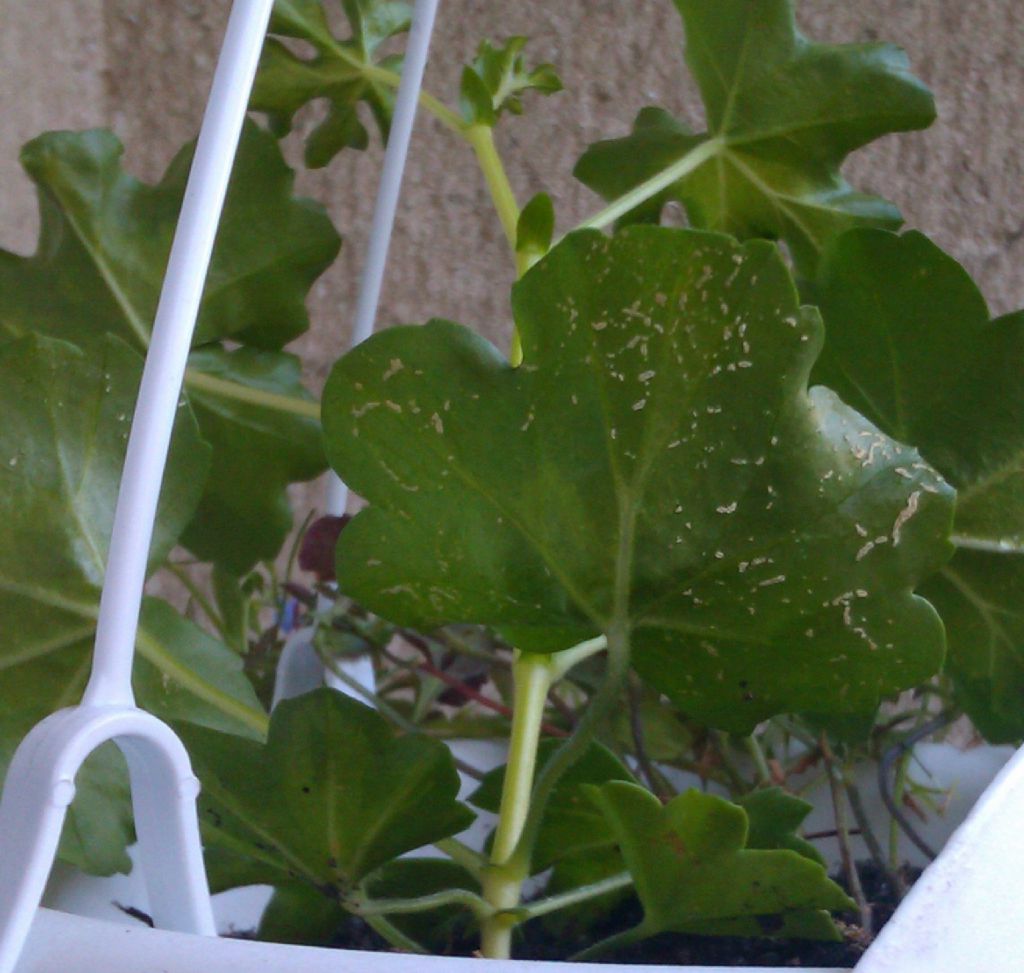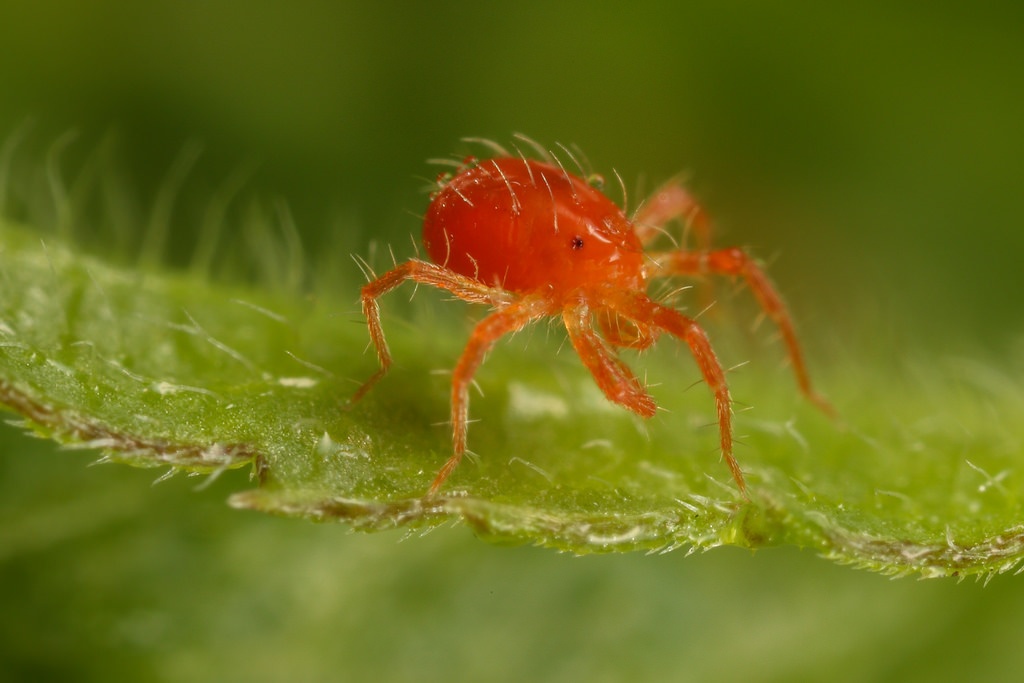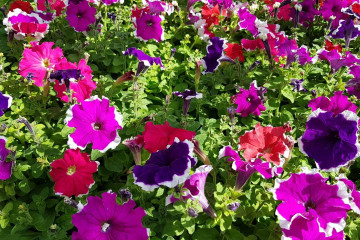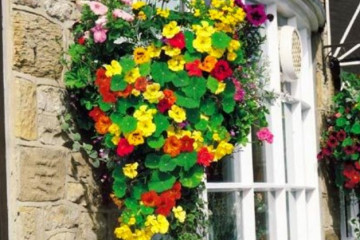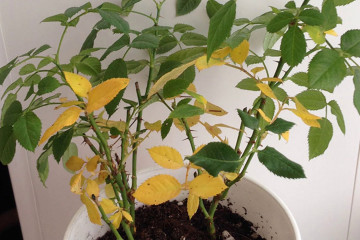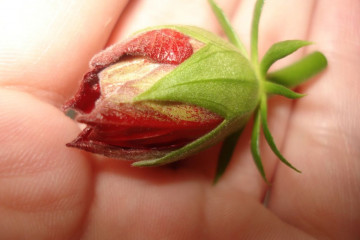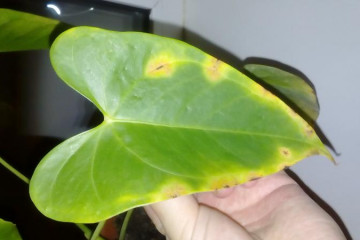Diseases of geranium, geranium leaves turn yellow and dry - what to do?
Content:
You can meet geranium, or pelargonium, in almost every home. The flower is so popular because of its beauty and medicinal properties. Often, lovers of green plants are faced with problems and ailments of geraniums, they will be discussed later.
Like many other plants, pelargonium is often subject to diseases, there are a large number of them. The article will give an idea of the most common ailments.
Geranium leaves turn yellow
Yellowing of the leaf plates at the edges indicates insufficient watering, a lack of moisture is the main cause of the problem. If the color change accompanies the general sluggish state of the flower, then the amount of liquid is reduced.
Why do geranium leaves turn yellow? Lack of lighting in the room leads to yellowing of the lower leaves on the plant.
To avoid a problem, you need to monitor the watering and the size of the geranium pot. Narrow containers do not allow the roots to fully develop, which is the reason for the death of some parts of the culture, they may dry out at first.
Geranium leaves turn yellow and dry, what should I do? There are quite a few reasons for this phenomenon, so it is worth considering in detail some of them.
Incorrect temperature conditions
The ideal indicator for room geranium is + 20 ° C. Increasing the parameter leads to a change in the color of the sheet plates. Most often, this can be observed in the winter with strong heating of the air from the central heating batteries.
Use of chemicals
Drying and yellowing of foliage occurs if chemicals, for example, preparations for the destruction of weeds, have got on pelargonium. In addition, the flower exhibits increased sensitivity to hygienic and cosmetic products: these are air fresheners, hair sprays, etc.
The presence of drafts
Most indoor plants are placed on windowsills, with regular ventilation, certain problems arise. Geranium leaves turn yellow, what should I do? In this case, you need to choose a place where drafts will not harm the pelargonium.
Geranium leaves turn red
Reddening of the leaf plates indicates that mistakes were made in the care of the culture. The reasons can be different: from violation of agrotechnical measures to incorrect content. To save a flower, it is necessary not only to respond to the problem in a timely manner, but also to treat the shrub.
There may be several reasons:
- Low room temperatures. With stable readings of +18 ° C and below, the plant begins to respond to conditions that are unsuitable for it, namely, reddening of the leaf plates from the tips, then the color of the entire leaf changes. The temperature must be adjusted as soon as possible, until the pelargonium has shed all the leaves;
- Diseases of a fungal or bacterial nature. Plants exposed to excessive watering and standing in a cool room are at risk.This environment is very popular with various spores and bacteria;
- Lack of nutrients. The lack of fertilizing with magnesium and nitrogen leads to the fact that geranium leaves turn red;
- Fertilizing in large quantities. Leaf plates turn red even if the culture receives too much nitrogen;
- If geranium leaves turn red, the reason is the intensity of the sun's rays. Pelargonium is a light-loving plant, but under prolonged exposure to the sun, it begins to burn not only the foliage, but also the stem. They appear as red spots.
Why do geranium leaves dry
Another problem that a geranium owner may face is the drying out of the leaf blades. There are several reasons for this condition in a plant:
- insufficient illumination;
- excessive or insufficient watering;
- sunburn;
- unsuitable temperature regime;
- diseases of pelargonium of fungal nature;
- the appearance of pests;
- small pot.
Some of the reasons have already been discussed above, therefore, options that have not yet been presented will be considered in more detail.
The lack of light is expressed by the gradual yellowing and drying of the leaves located below the plant. The stretching of the stem part begins, the flowering phase is either very rare or absent altogether. It is easy to correct the situation by rearranging the pot to a more suitable place, closer to the light source, or installing a phytolamp.
The appearance of pests is accompanied by the formation of small yellow dots. In some cases, the shoots are covered with sticky bloom or cobwebs. As the points grow, the leaf plates begin to dry out. It is necessary to determine who is harming the plant and get rid of the parasite as soon as possible.
The tightness is indicated by the state of the leaves: at first they may turn yellow, then dry and fall off. In addition, the root system begins to show through the drainage hole of the pot. The best way out of the situation is a culture transplant.
In addition, you need to pay attention to how the foliage dries:
- the defeat affects the leaf plates at the edges - insufficient watering;
- the plant itself begins to dry out - a disease of fungal origin.
Bordeaux liquid 5% will help get rid of the fungus. At the same time, the culture is treated with Fitosporin twice with a week break.
Lack of flowering
In order for a plant in an apartment to delight its owner with a beautiful flowering, it needs the correct conditions of detention, violations of which lead to the absence of buds. There may be several reasons:
- Lack of fertilizer;
- Improper watering;
- The pot is not suitable for the plant;
- Pruning is not carried out in a timely manner. With active growth and excessive thickening, pelargonium will only produce leaf plates. You need to prune in the spring or autumn months;
- Lack of lighting;
- Lack of the right conditions in winter. The temperature indicator during the cold season should be up to + 16 ° C. The plant should receive light at least 5 hours a day. Watering is carried out in small portions of liquid.
Possible diseases
Mushroom Botrytis
A large number of reasons leading to yellowing of foliage in geraniums have already been described, but there is one more - the appearance of the fungus Botrytis. It can be recognized by the defeat of the leaf plate: it begins to go not from the edge of the foliage, but in a triangle. Defeating the disease is not as easy as it seems. Fungicidal treatments do not always give the desired result the first time.
Root rot
The ailment is detected by the presence of depressed spots of a dark color in the lower part of the stem, and the mycelium of the fungus will develop on them, causing root rot. The plant withers gradually.
The problem may arise for the following reasons:
- too much dressing in the ground;
- increased room temperature;
- excessive watering;
- non-observance of the light regime;
- lack of ventilation.
The following measures are taken as control measures:
- compliance with agrotechnical issues;
- termination of watering;
- treatment of the culture with fungicides: "Fundazol", "Rovral".
Leaf rust
The main symptom of the disease is the appearance on the leaf plates of places with a rusty-yellow color. Spore powder-filled nubs may form. With severe damage, the plant becomes lethargic and sheds its leaves.
Treatment is carried out:
- using bottom irrigation;
- dead plant parts are removed;
- use fungicidal preparations.
Bacterial
Geranium diseases include bacterial ailments, they are carried by microbes. Triangular brown spots may appear on the leaves. The affected areas gradually dry out, and all the pelargonium withers.
How to deal with the problem:
- Cleansing the soil, transplanting the culture into another container with better quality soil. It is recommended to discard old soil;
- Watering in the morning;
- Use of fungicidal agents.
Viral
This category of ailments is characterized by various symptoms: both growth arrest and the appearance of spots in the shape of a circle of violet-brown color. Fighting viruses is not much different from fighting bacterial diseases. Particular attention is paid to insects that carry infection.
Spotting
In another way, the disease is called alternaria. The underside of the leaf becomes covered with spots and bubbles, then fades, turns yellow, falls off.
With cercosporosis, the appearance of pale white sunken spots is also observed, then they turn gray. The affected area turns brown over time and rises in the central part.
Treatment:
- removal of affected leaf plates;
- thinning processes;
- fungicide treatment.
Edema
The disease is determined by the presence of bubbles, inside which there is liquid. They are formed on the sheet parts. Initially, the bubbles are light green, then turn brown. Edema occurs due to a large amount of moisture and a too low temperature index of the air and soil. They get rid of the symptoms by normalizing the conditions of the plant.
Preventive measures
Most diseases and crop problems occur when the conditions of care are violated. In order to prevent ailments, including not letting the leaves turn red, it is recommended to adhere to simple rules:
- Compliance with the temperature regime.
- Control of the indicator of moisture, both soil and air.
- Providing adequate lighting.
- Fertilization.
- Fighting midges.
If insects are found, all plants are examined, washed, treated with insecticidal agents.
Geranium has long been considered a very useful indoor plant with the ability to destroy bacteria in large quantities. Also, the flower has medicinal properties, for the maintenance of which the culture needs proper care.
Video
